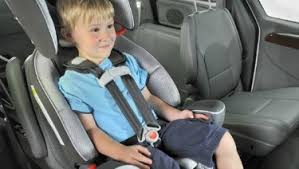Prioritizing Safety for Your Little Ones
As parents, ensuring the safety of our children is paramount, especially when it comes to traveling in vehicles. One crucial aspect of child safety on the road is the proper use of baby car seats. In this comprehensive guide, we’ll delve into the importance of making baby car seats the #SafestLap in your vehicle.
2. Understanding Baby Car Seats: A Vital Safety Measure
Baby car seats, also known as infant car seats, are specially designed to protect infants and young children in the event of a car accident or sudden stop. These seats are engineered to provide optimal support for a child’s fragile body, reducing the risk of injury in the event of a collision.
3. The #SafestLap Movement: Promoting Child Safety on the Road
The #SafestLap movement aims to raise awareness about the importance of properly installing and using baby car seats in vehicles. By making the baby car seat the safest lap for your child, you can significantly reduce the risk of injury and ensure their well-being during travel.
4. Choosing the Right Baby Car Seat: Key Considerations
When selecting a baby car seat, it’s essential to consider factors such as your child’s age, weight, and height, as well as the type of vehicle you drive. Look for seats that meet safety standards set by organizations like the National Highway Traffic Safety Administration (NHTSA) and the American Academy of Pediatrics (AAP).
5. Proper Installation: Ensuring a Secure Fit
Proper installation of the baby car seat is crucial for its effectiveness in protecting your child. Follow the manufacturer’s instructions carefully and consider seeking assistance from a certified Child Passenger Safety Technician (CPST) to ensure a secure fit in your vehicle.
6. Harnessing Your Child Safely: Buckle Up for Protection
The harness system of the baby car seat plays a vital role in keeping your child safe during travel. Ensure that the harness straps are snug and positioned at or below your child’s shoulders to prevent them from sliding out in the event of a crash.
7. Rear-Facing vs. Forward-Facing Seats: Understanding the Difference
For infants and young children, rear-facing car seats provide the best protection in the event of a collision. It’s recommended to keep children in a rear-facing position for as long as possible, following the guidelines provided by the car seat manufacturer and safety organizations.
8. Regular Inspections and Maintenance: Keeping Your Baby Car Seat Safe
Regular inspections and maintenance of your baby car seat are essential to ensure its continued effectiveness in protecting your child. Check for signs of wear and tear, and replace the seat if necessary. Additionally, clean the seat regularly to remove dirt and debris that may compromise its performance.
9. Educating Others: Spreading Awareness for Child Safety
Participate in the #SafestLap movement by educating friends, family members, and caregivers about the importance of proper car seat use. Share resources and information to help others make informed decisions when traveling with children.
Prioritizing Safety for Our Little Ones
In conclusion, making the baby car seat the #SafestLap in your vehicle is essential for ensuring the safety and well-being of your child during travel. By following proper installation and usage guidelines, choosing the right seat for your child’s age and size, and participating in awareness efforts like the #SafestLap movement, we can all contribute to creating a safer environment for our little ones on the road.




